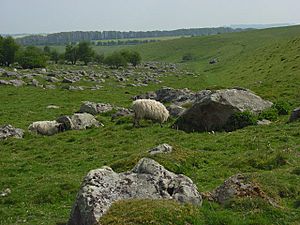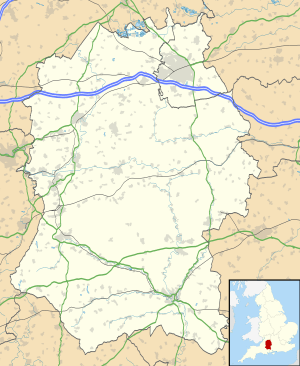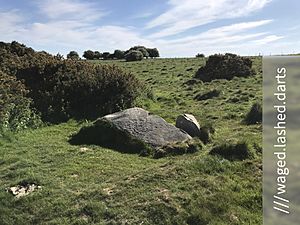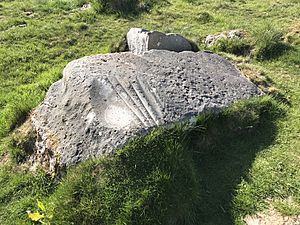Fyfield Down facts for kids
Quick facts for kids Fyfield Down |
|
|---|---|

Sarsen stones on Fyfield Down
|
|
| Location | Wiltshire, England, UK |
| OS grid | SU136709 |
| Coordinates | 51°26′13″N 1°48′21″W / 51.4369°N 1.8057°W |
Fyfield Down is a special place in Wiltshire, England. It's about 1.5 kilometres (1 mile) north of a village called Fyfield, Wiltshire. This area is part of the North Wessex Downs, which is a beautiful hilly region.
Fyfield Down is important for both its nature and its geology. Because of this, it was named a Site of Special Scientific Interest (SSSI) in 1951. This means it's a protected area where plants, animals, and geological features are very important and need to be looked after. The most famous things here are the many large stones called sarsens. People often call them the Grey Wethers.
It's good to know there's another place also called Fyfield Down in Wiltshire, near Pewsey. But the one we are talking about here is the one near Marlborough. The two places are only about 9 kilometres (6 miles) apart.
Amazing Sarsens
Fyfield Down is home to the best collection of sarsen stones in all of England. Sarsens are large, hard stones that were left behind after softer rock around them wore away over millions of years.
These stones are known as the Grey Wethers because, from a distance, they look a lot like a flock of sheep resting in the fields. A man named Col. Richard Symonds wrote in his diary back in 1644 that "They call that place the Grey-wethers, because a far off they looke like a flock of sheepe." These ancient stones are also very important because they have many different kinds of lichen growing on them. Lichens are tiny living things that are a mix of fungi and algae. They can grow on rocks and trees. Sometimes, people also call this natural rock area "Mother's Jam."
The Polisher Stone
On the western side of Fyfield Down, you can find a sarsen stone that lies flat on the ground. This stone has special grooves and marks on its surface. Experts believe it was used long ago, during the Neolithic (New Stone Age) and Bronze Age periods. It was probably a grinding bench where ancient people would shape, sharpen, and polish their stone axe-heads and other tools. Similar stones have been found in France.
The Devil's Den Dolmen
To the east of Fyfield Down, there's an ancient structure called The Devil's Den. This is a type of prehistoric monument known as a dolmen. A dolmen is usually made of several large upright stones with a big flat stone placed on top, like a table.
The Devil's Den is actually what's left of a Neolithic passage grave. A passage grave was a burial chamber from the Stone Age, often with a long entrance passage leading to a central room. This particular dolmen was rebuilt in 1921 to help preserve it. It gives us a glimpse into how people lived and buried their dead thousands of years ago.




